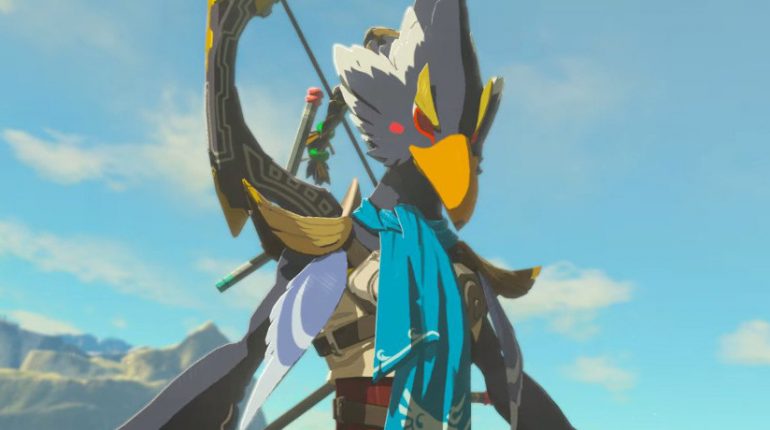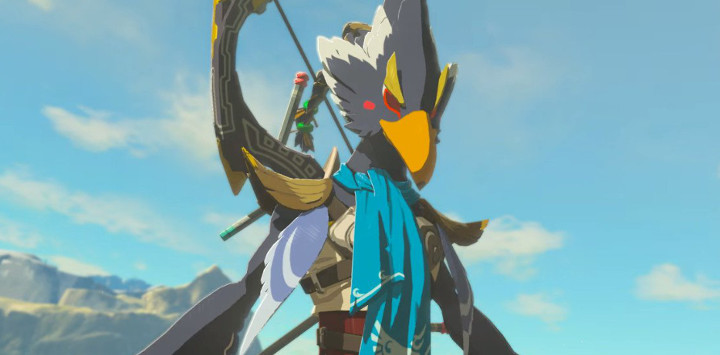
In many ways, The Legend of Zelda: Breath of the Wild is a colossal step forward for the Zelda franchise. Nintendo showed a surprising willingness to dismantle the classic Zelda formula (which actually started with A Link to the Past) and rebuild it from scratch.
But even so, Breath of the Wild is still a Zelda game at heart, and it’s chock full of details that will remind long-time fans of other games in the series.
While you’ll find a lot of links (no pun intended) back to Ocarina of Time and even the original Legend of Zelda, I would argue that Breath of the Wild has more in common with The Wind Waker than any of the other games in the series. Here’s a list of common threads that tie the two games together.
Cel-Shaded Art Style
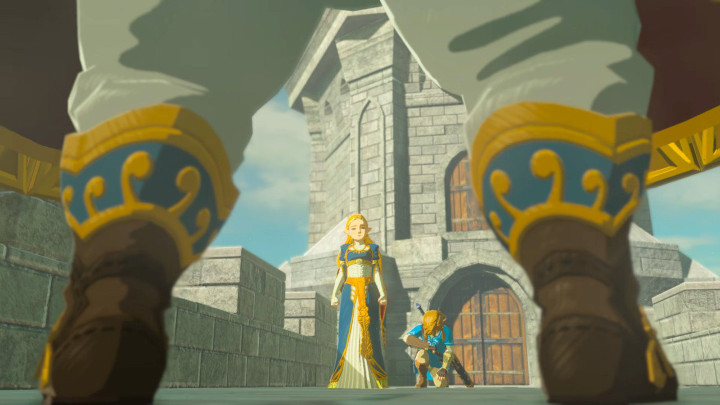
At a glance, the obvious thing that sets The Wind Waker apart from other mainline Zelda games is its cel-shaded look, which makes its aesthetic very close to that of hand-drawn animation. While Breath of the Wild eschews the big-headed character design of The Wind Waker, it offers a glorious return to the bright, vibrant color palate afforded by the cel-shaded art style, which I would argue makes it the most visually stunning Zelda game to date.
The only other mainline game that comes close to this visual style is Skyward Sword, but I would argue that was going for a watercolor look, not a hand-drawn animation look.
Hyrule in Ruins
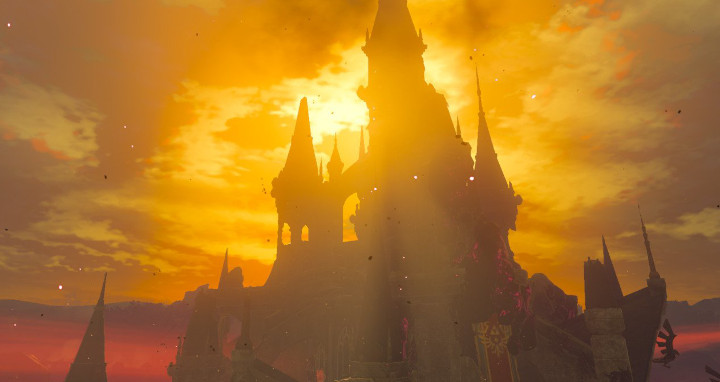
The colorful look is important, because it serves as a candy coating for the emotionally dark stories of The Wind Waker and Breath of the Wild. Both of these games show us a version of Hyrule in which evil had already conquered good, and Hyrule was left in ruins.
In the Wind Waker, the gods saw fit to flood the land and keep Hyrule Castle locked in a state of stasis at the bottom of the Great Sea. In Breath of the Wild, Calamity Ganon had defeated Hyrule’s heroes 100 years prior, and Hyrule has been in a state of decay ever since. In exploring the world as presented in both of those games, you’ll see how the denizens of Hyrule have been coping with these landscape-altering events.
And speaking of exploring…
Large-Scale Sense of Exploration
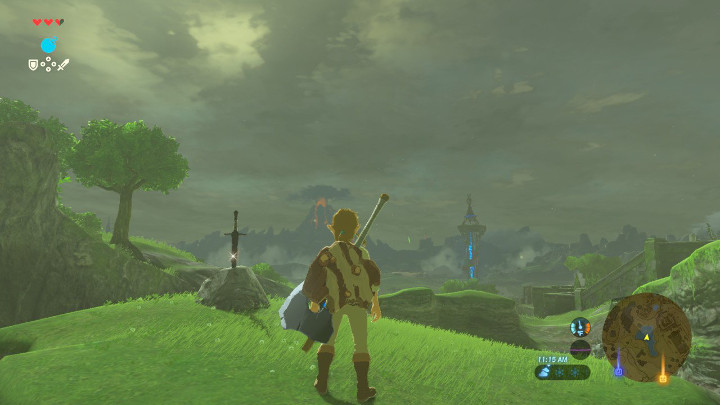
Many are comparing Breath of the Wild‘s exploration with that of the original Legend of Zelda. That’s a completely valid comparison (and one that I’ve made myself), since, unlike most Zelda games, Breath of the Wild puts very few restrictions or pre-requisites on which parts of the game you can explore. The only other Zelda game that can truly make this claim is the original.
However, there is a Wind Waker element to this exploration that very few people are pointing out. In The Wind Waker, you were given a boat and an overwhelmingly large sea to explore. To follow the main storyline, you were forced to travel to specific locations in a very specific order (there were some exceptions to this, of course). But while you traveled this watery world, you were constantly tantalized with distant islands that you could see from your boat. Taking a detour to those places was often met with discovery.
Breath of the Wild employs this same trick — perpetually teasing the player with faraway locations filled with interesting things to see and do — but it does so on a scale we could have hardly imagined back in the Wind Waker era.
Underwater Treasure

While at sea in The Wind Waker, players were constantly salvaging treasure from the ocean floor. In Breath of the Wild, just about every body of water you find will have submerged treasure chests that can be raised using the Sheikah Slate’s Magnesis ability. Many of these have rupees or weapons inside, but the occasional chest will contain an armor piece that can’t be obtained anywhere else in the game.
Koroks
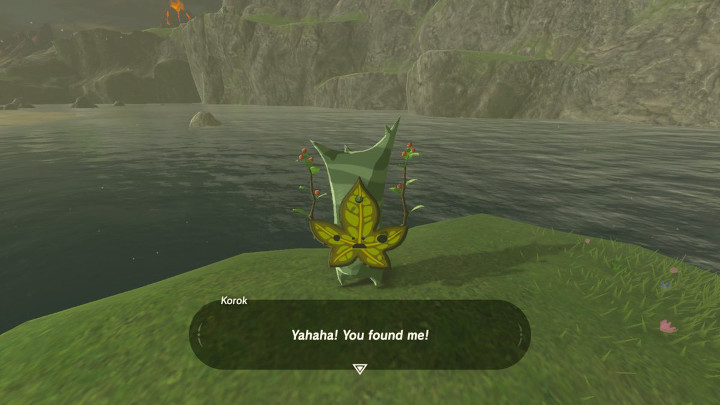
In the Wind Waker timeline, the Kokriki from Ocarina of Time have transformed into adorable little forest sprites called Koroks. The Hero of the Wind, in The Wind Waker, was given the task of finding and watering eight Korok seeds that had been planted on various islands around the Great Sea. In Breath of the Wild, Link can collect 900 Korok seeds, which will help him upgrade his inventory. It’s one of the most daunting tasks in the game due to the quantity of seeds you’ll have to find to complete it.
Currently, Breath of the Wild is the only game in the series besides The Wind Waker to feature the Koroks, which has led many fans to the conclusion that the two games take place in the same timeline.
Rito
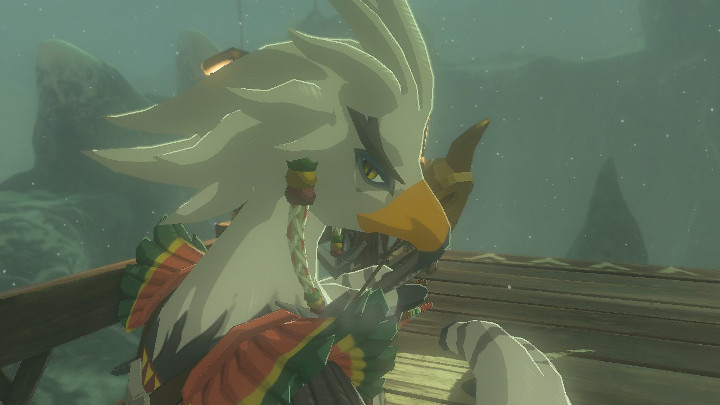
The Koroks aren’t the only creatures from Wind Waker to reappear in Breath of the Wild; the Rito are back as well.
The Rito are a race of bird people who lived at Dragon Roost Island in The Wind Waker. In Breath of the Wild, you’ll find them in Rito Village, where they’ll play an integral role in helping you reach one of the Divine Beasts.
Like the Koroks, the Rito only exist in The Wind Waker and Breath of the Wild (unless you count Hyrule Warriors, which is non-canon). Interestingly, there are several key differences between the depiction of the Rito in both games. In the Wind Waker, they look more human-like, with beaks replacing their noses. They were also said to have evolved from the Zora in this timeline. But in Breath of the Wild, their appearance is much more birdlike, and the Rito live alongside the Zora. Perhaps this implies that we’re in a different timeline, or maybe the Zora and Rito in Breath of the Wild share a common ancestor, which was also called the Zora. (Breath of the Wild‘s Zora have a different look than the Zora in other Zelda games, making this a possible, though unconfirmed, explanation.)
Photo Mode (and Selfies)
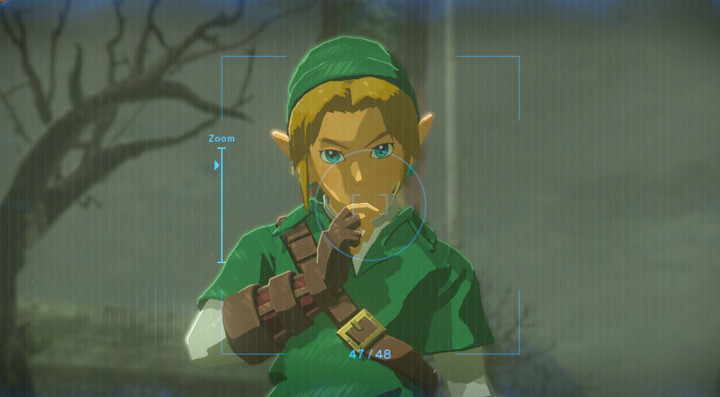
The Wind Waker featured the Picto Box, which let you take pictures as you sailed around the Great Sea, and Breath of the Wild features a photo upgrade for the Sheikah Slate. I’ve already explained the similarities and differences in another post, so I’ll just reiterate here that these are the only two games in the series that give Link the option to take selfies.
A King with Three Names
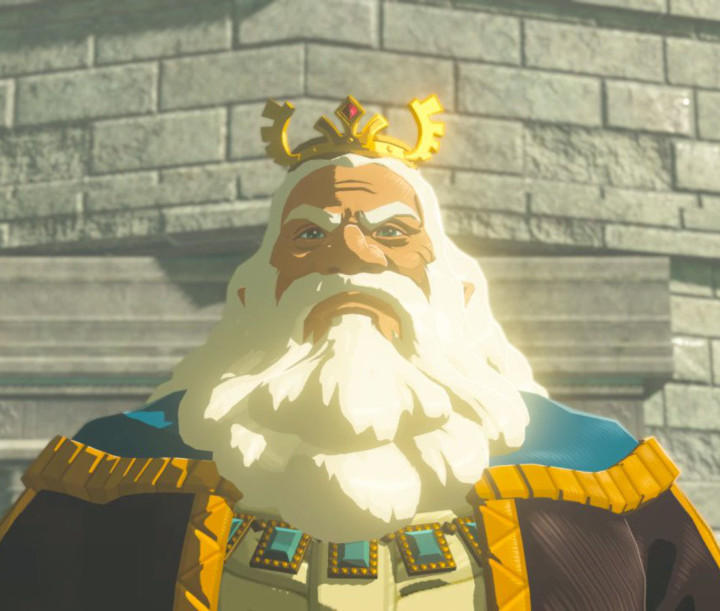
Please, correct me if I’m wrong about this, but I can only remember one previous King of Hyrule who was actually given a three-part name inside a Zelda game, and that was Daphnes Nohansen Hyrule from The Wind Waker. In Breath of the Wild, you’ll meet another named king, Rhoam Bosphoramus Hyrule.
Of course, The Minish Cap featured appearances by two named kings, King Daltus and King Gustaf (as a ghost), but neither follows the three-name structure created in The Wind Waker. Only Breath of the Wild continues this tradition. It’s a tiny detail, but it lends a consistency to these two game worlds.
Beedle
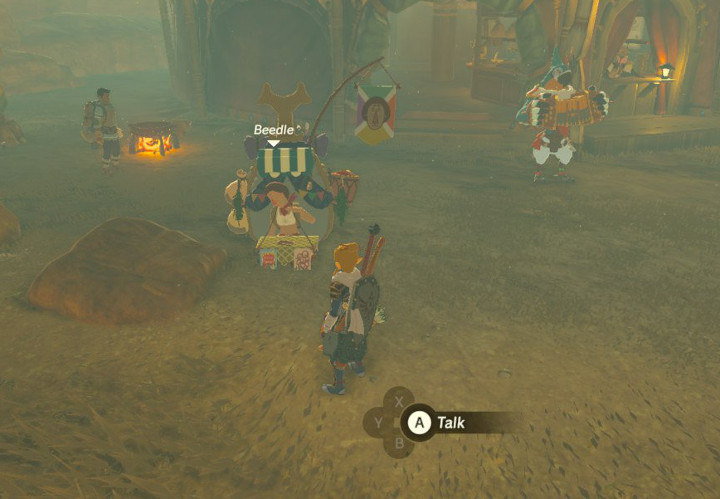
I’ll admit that this one is a little bit of a stretch, since Beedle is a recurring character in the Zelda universe. However, this traveling merchant’s first appearance was in The Wind Waker in 2002 (2003 in the United States). He shows up in the Wind Waker timeline (he appears in both Phantom Hourglass and Spirit Tracks, which are sequels to The Wind Waker), but he also appears in Skyward Sword and The Minish Cap, which both take place before the Zelda timeline splits into three. This might be seen as evidence that Beedle exists in the Hero of Wind timeline, but not the Twilight or Decline of Hyrule timelines, which would put Breath of the Wild and Wind Waker on the same timeline.
Of course, there are several other theories about where Breath of the Wild exists on the Zelda timeline. Like I said earlier, this one might be a little bit of a stretch.
Boat Merchant
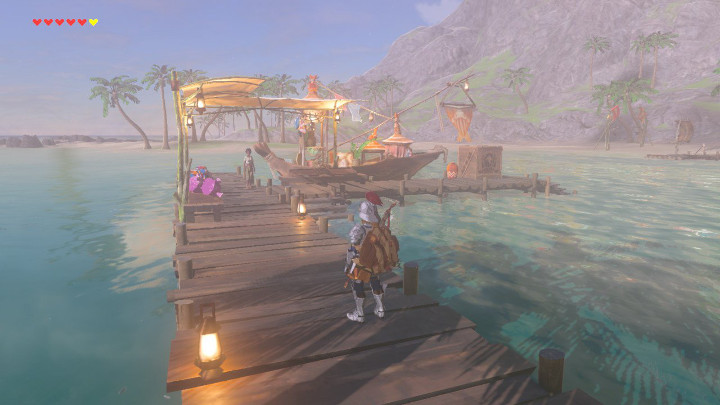
Beedle runs a traveling shop in The Wind Waker, which he operates out of a boat. Breath of the Wild also features a boat merchant, though it isn’t Beedle.
Paragliding
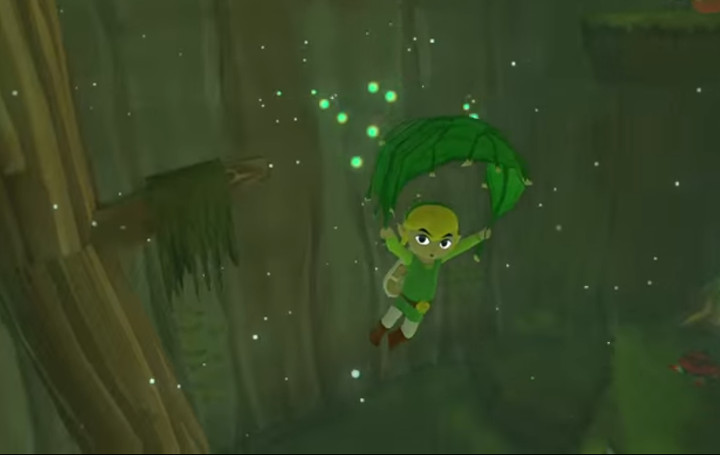
One of the key ways you’ll get around Hyrule in Breath of the Wild is with the Paraglider item, which lets you safely glide from high areas to lower ones. This is remarkably similar to the way the Deku Leaf item worked in The Wind Waker.
Use a Leaf to Make the Wind Blow
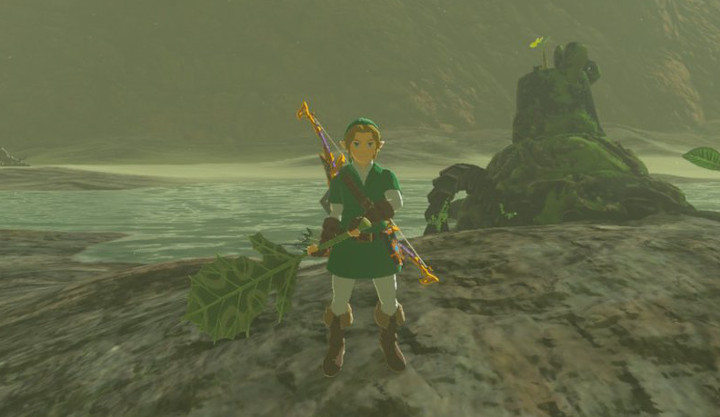
And speaking of the Paraglider’s resemblance to the Deku Leaf, it should also be pointed out that Breath of the Wild has an item called the Korok Leaf, which is similar in appearance to the Deku Leaf, though it doesn’t work as a paraglider. Its other use — Link can wave it to create bursts of wind — is how it’s used in Breath of the Wild, which will be mentioned again in the next point.
Boat Travel
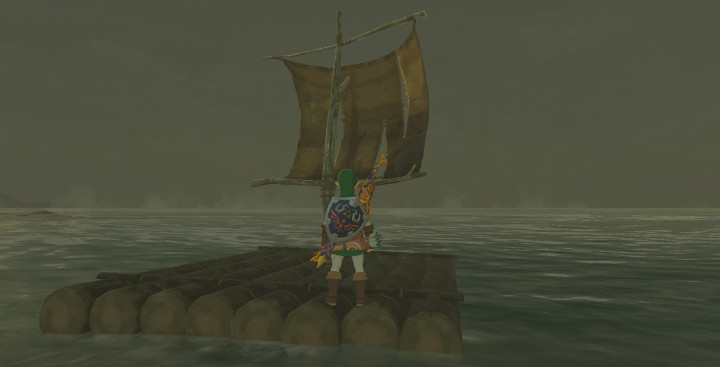
In The Wind Waker, your primary means of long-distance travel was a boat. While you won’t be using them all that often, Breath of the Wild does allow you to travel using a raft. In both games, you’re at the mercy of the wind, but both games give you ways to overcome this obstacle (the Wind Waker baton in The Wind Waker and the Korok Leaf in Breath of the Wild).
Armor of the Wind
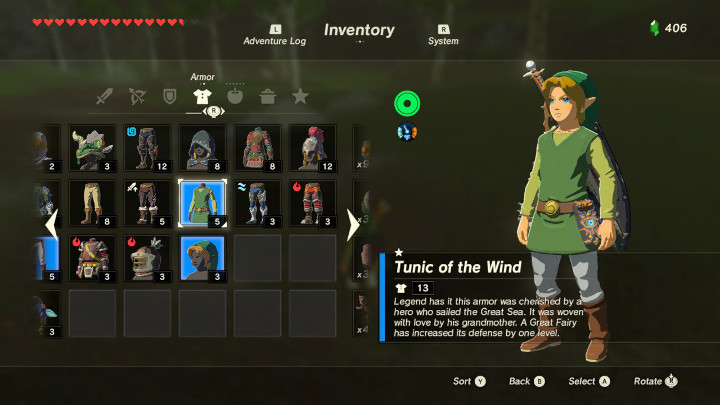
Okay, so this is almost certainly non-canon, but scanning the Wind Waker amiibo in Breath of the Wild gives you a chance to acquire an armor set that gives link his Wind Waker appearance (it’s really just a simple, light green tunic with a yellowish green undershirt, with trousers and a cap to match). Of course, you can also acquire armor sets from Ocarina of Time, Twilight Princess, and A Link to the Past, and you can even score a Dark Link set.
